 |
||
|
||
| ||
|
||||||||||||||||||||||||||||||||||||||||||||||||||||||||||||||||||||||
| TYAN TACHYON G9800Pro-M 128MB |  |
|
| TYAN TACHYON G9800Pro-M 128MB | |
| AGP x8/x4/x2 interface, 128 MB DDR SDRAM memory in 8 chips on both
PCB sides.
Samsung 2.8ns memory chips correspond to 350 (700) MHz but the memory works at 340 (680) MHz typical of the RADEON 9800 PRO. GPU clocked at 380 MHz (400MHz with TYAN's special utility). 256bit memory interface.
|
 |
| Comparison with the reference design, front view | |
| TYAN TACHYON G9800Pro-M 128MB | Reference card ATI RADEON 9800 PRO |
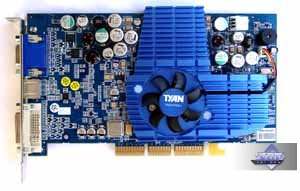 |
 |
 |
|
| Comparison with the reference design, back view | |
| TYAN TACHYON G9800Pro-M 128MB | Reference card ATI RADEON 9800 PRO |
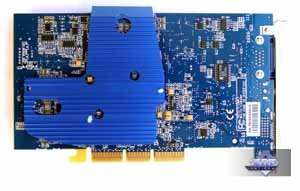 |
 |
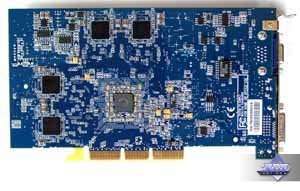 |
|
|
The PCB design is based on the reference one but the hardware monitoring
support brings two thermal sensors and the monitoring chip onboard.    The TYAN Graphic Monitor software: |
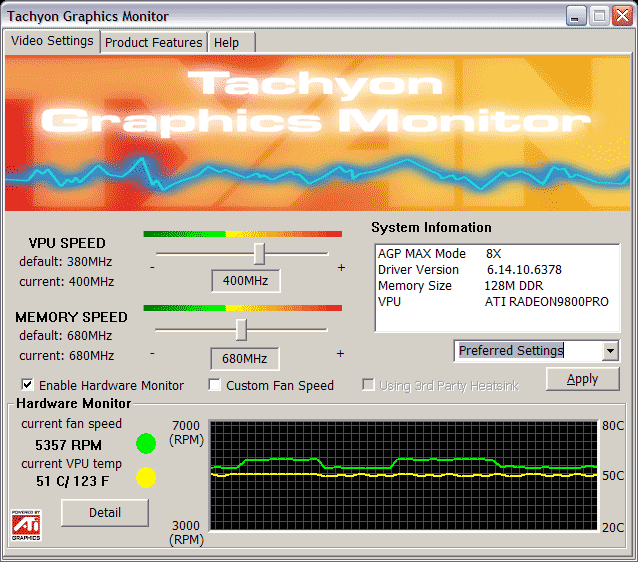

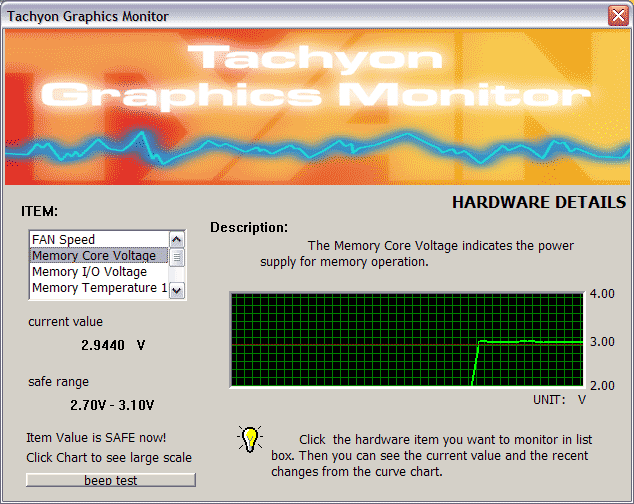

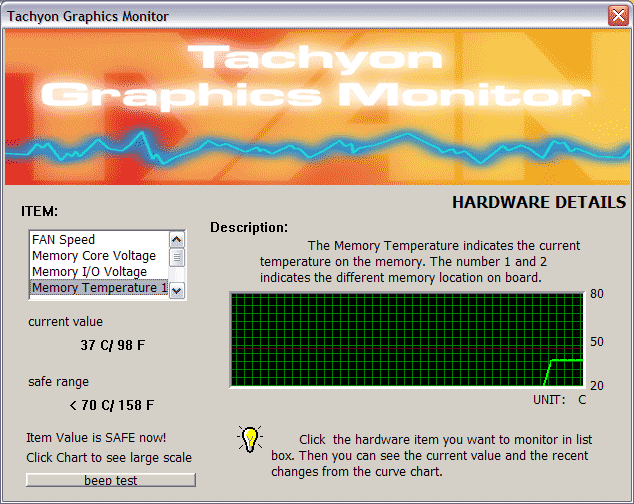
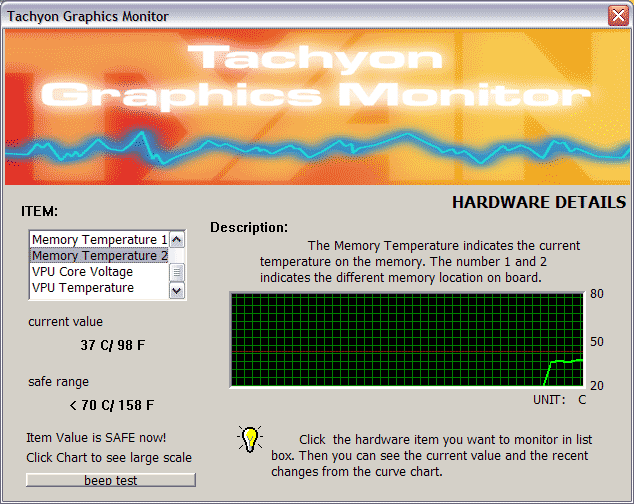
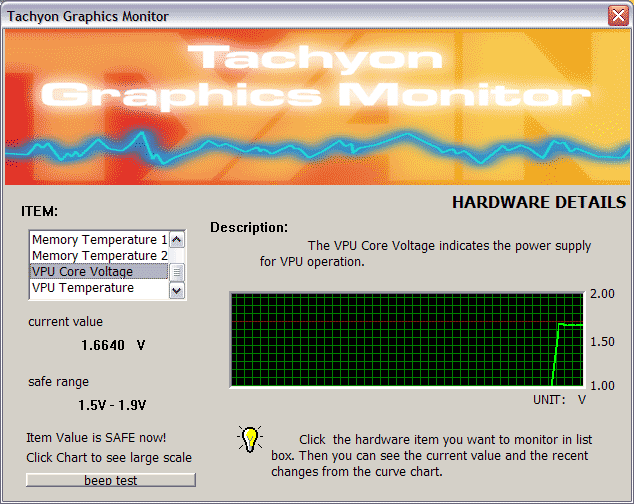


| TYAN TACHYON G9800Pro-M 128MB | |
| User guide, TV extender, DVI-to-d-Sub, S-video-to-RCA adapters, external power supply splitter, drivers, utilities and WinDVD. |  |
|
Package: |
| TYAN TACHYON G9800Pro-M 128MB | |
|
It's a usual cardboard box, but the card's clock speeds are written twice (unfortunately, few manufacturers write the clock speeds on boxes). |
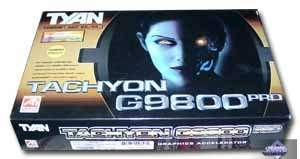 |
|
| TYAN TACHYON G9800Pro-M 128MB | 1600x1200x85Hz, 1280x1024x120Hz, 1024x768x160Hz |
Since the ordinary RADEON 9800 PRO and TYAN's card do not differ much, it's not needed to test in all modes (AA and anisotropy). That is why the difference will be demonstrated only in the regular mode.
Conventional signs: ANISO 8xP - Anisotropic 8x Performance (earlier
it was called Balanced), ANISO 8xQ - Anisotropic 8x Quality, ANISO 16xQ -
Anisotropic 16x Quality.
Test applications:
Return to Castle Wolfenstein (MultiPlayer) (id Software/Activision) - OpenGL,
multitexturing, ixbt0703-demo, test settings - maximum, S3TC OFF, the configurations
can be downloaded from here
Serious Sam: The Second Encounter v.1.05 (Croteam/GodGames) - OpenGL, multitexturing,
ixbt0703 demo, test settings: quality, S3TC OFF
Quake3 Arena v.1.17 (id Software/Activision) - OpenGL, multitexturing, ixbt0703
demo, test settings - maximum: detailing level - High, texture detailing level
- #4, S3TC OFF, smoothness of curves is much increased through variables r_subdivisions
"1" and r_lodCurveError "30000" (at default r_lodCurveError is 250 !), the
configurations can be downloaded from here
Unreal Tournament 2003 v.2225 (Digital Extreme/Epic Games) - Direct3D, Vertex
Shaders, Hardware T&L, Dot3, cube texturing, default quality
Code Creatures Benchmark Pro (CodeCult) - the game that demonstrates card's
operation in DirectX 8.1, Shaders, HW T&L.
Unreal II: The Awakening (Legend Ent./Epic Games) - Direct3D, Vertex Shaders,
Hardware T&L, Dot3, cube texturing, default quality
RightMark 3D v.0.4 (one of the test scenes) - DirectX 8.1, Dot3, cube texturing,
shadow buffers, vertex and pixel shaders (1.1, 1.4).
If you need the demo benchmarks let me know by email.


An easy victory.
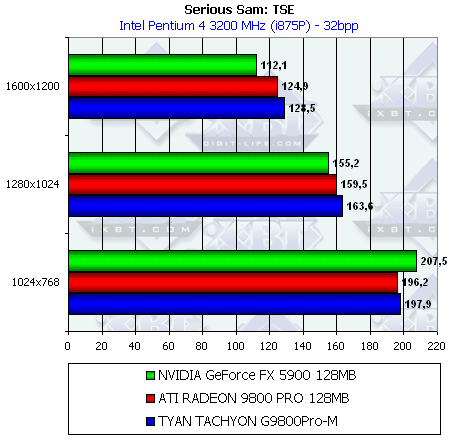

The higher the resolution, the stronger the leadership.


A little breakaway.
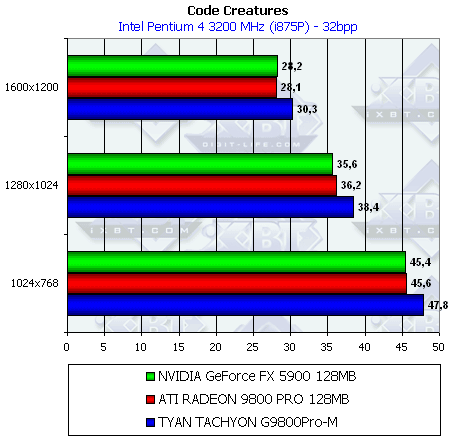

The same.


The picture's identical.


The advantage of TYAN's card is even higher.
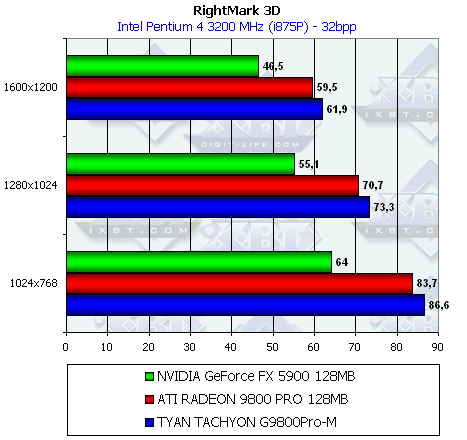

The scores are expected. The shader speed is the most important factor here.
This RADEON 9800 PRO based product has unique features: the increased card's clock speed with the TGM utility, and hardware monitoring. However, both features are interconnected: the hardware monitoring works only through the TGM utility, which automatically increases the core clock speed.
TYAN made a good product with a sufficient memory size of 128 MB and with the clock speeds being between the RADEON 9800 PRO and 9800 XT. The price will be the determining parameter. But we purposely compared this card with the GeForce FX 5900 instead of the 5900 Ultra, as TYAN's card is much cheaper than the 5900 Ultra.
In our 3Digest you can find full comparison characteristics for video cards of this and other classes.
|
Article navigation: |
| blog comments powered by Disqus |
| Most Popular Reviews | More RSS |
 |
Comparing old, cheap solutions from AMD with new, budget offerings from Intel.
February 1, 2013 · Processor Roundups |
 |
Inno3D GeForce GTX 670 iChill, Inno3D GeForce GTX 660 Ti Graphics Cards A couple of mid-range adapters with original cooling systems.
January 30, 2013 · Video cards: NVIDIA GPUs |
 |
Creative Sound Blaster X-Fi Surround 5.1 An external X-Fi solution in tests.
September 9, 2008 · Sound Cards |
 |
The first worthwhile Piledriver CPU.
September 11, 2012 · Processors: AMD |
 |
Consumed Power, Energy Consumption: Ivy Bridge vs. Sandy Bridge Trying out the new method.
September 18, 2012 · Processors: Intel |
| Latest Reviews | More RSS |
 |
Retested all graphics cards with the new drivers.
Oct 18, 2013 · 3Digests
|
 |
Added new benchmarks: BioShock Infinite and Metro: Last Light.
Sep 06, 2013 · 3Digests
|
 |
Added the test results of NVIDIA GeForce GTX 760 and AMD Radeon HD 7730.
Aug 05, 2013 · 3Digests
|
 |
Gainward GeForce GTX 650 Ti BOOST 2GB Golden Sample Graphics Card An excellent hybrid of GeForce GTX 650 Ti and GeForce GTX 660.
Jun 24, 2013 · Video cards: NVIDIA GPUs
|
 |
Added the test results of NVIDIA GeForce GTX 770/780.
Jun 03, 2013 · 3Digests
|
| Latest News | More RSS |
Platform · Video · Multimedia · Mobile · Other || About us & Privacy policy · Twitter · Facebook
Copyright © Byrds Research & Publishing, Ltd., 1997–2011. All rights reserved.